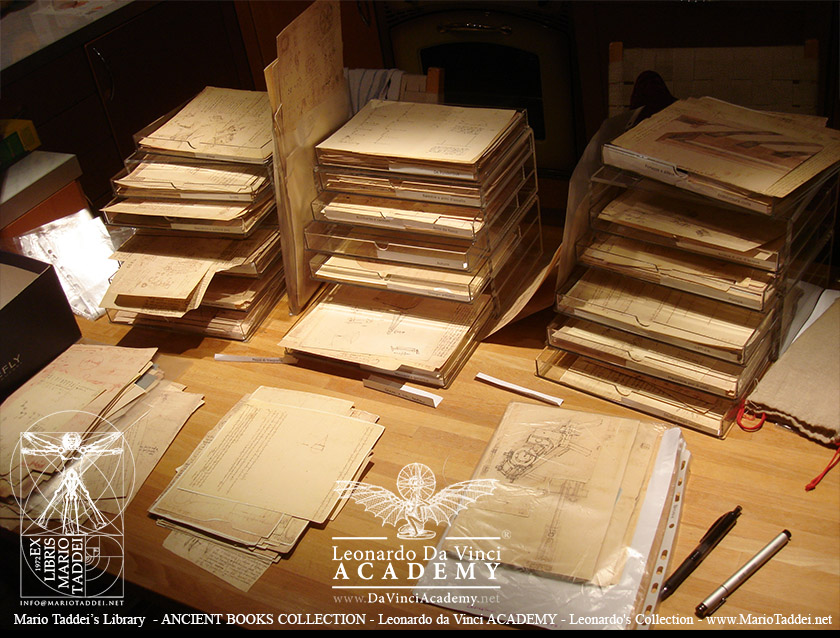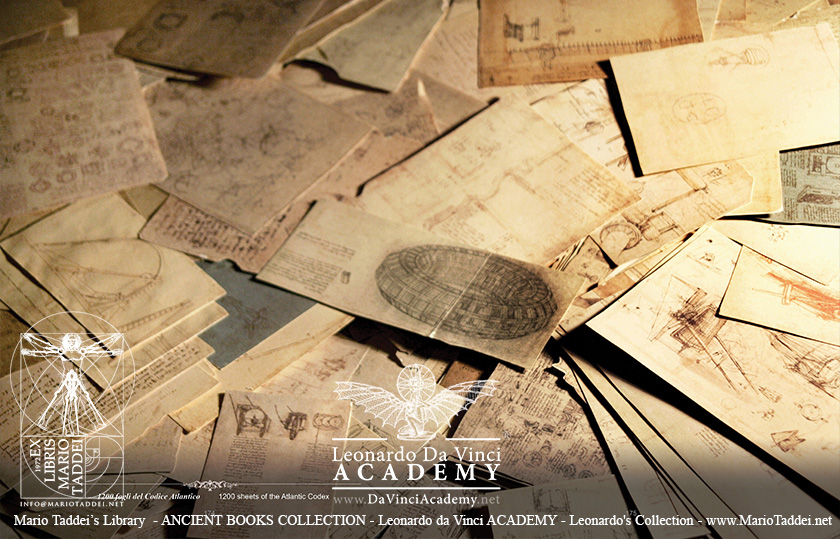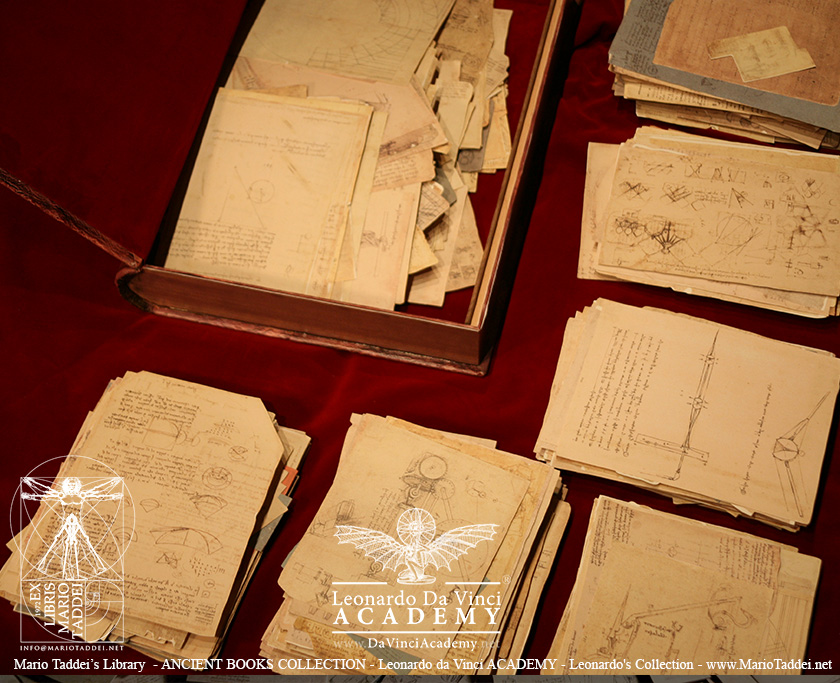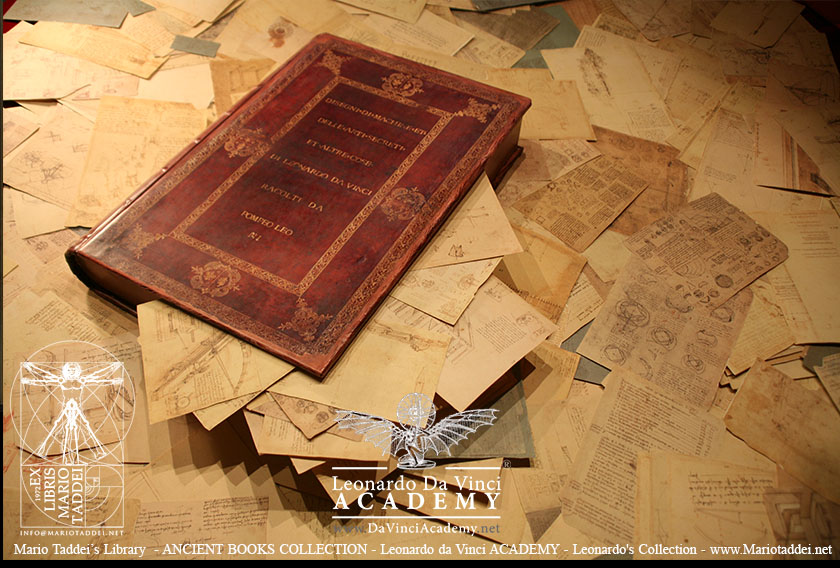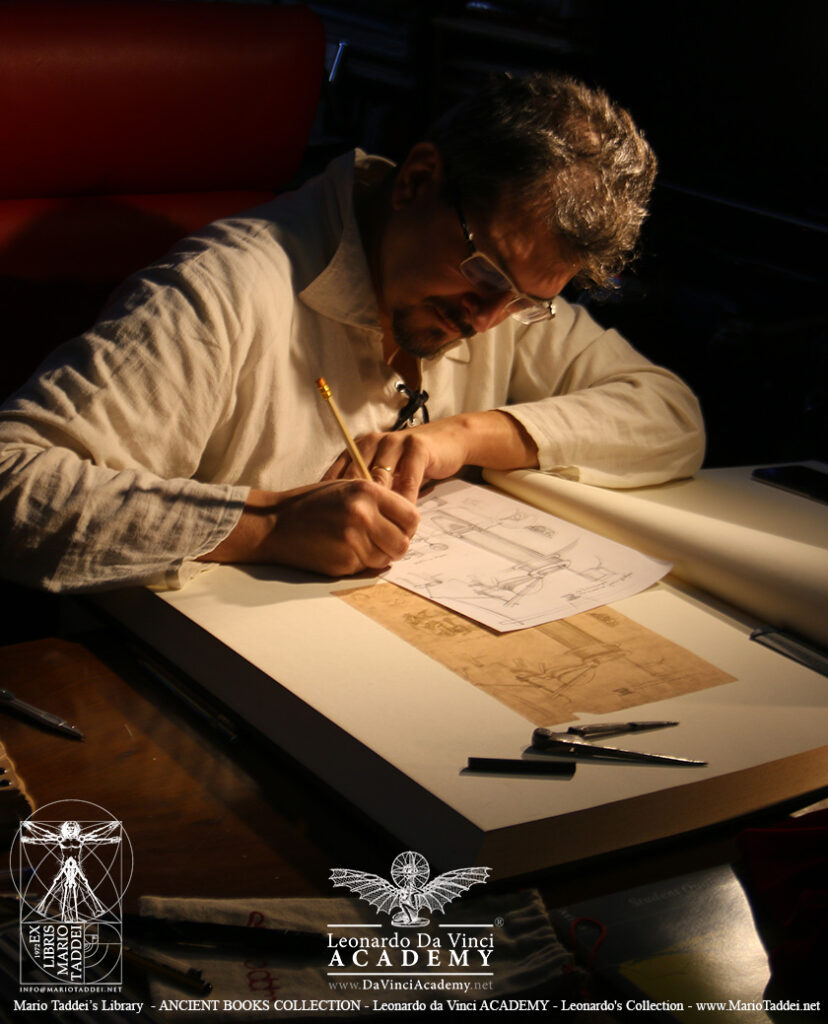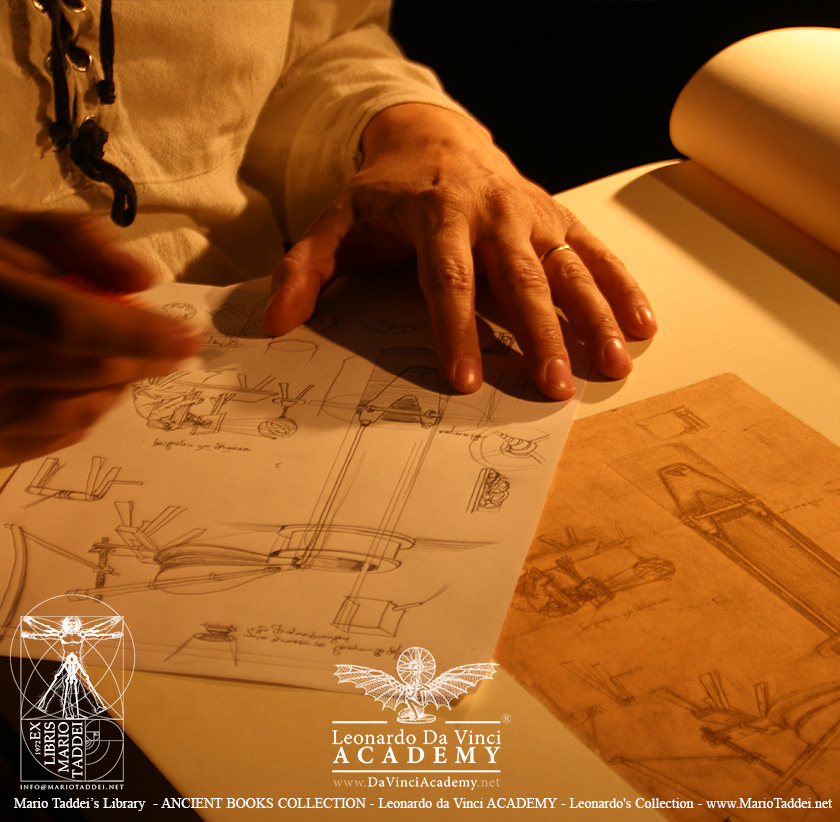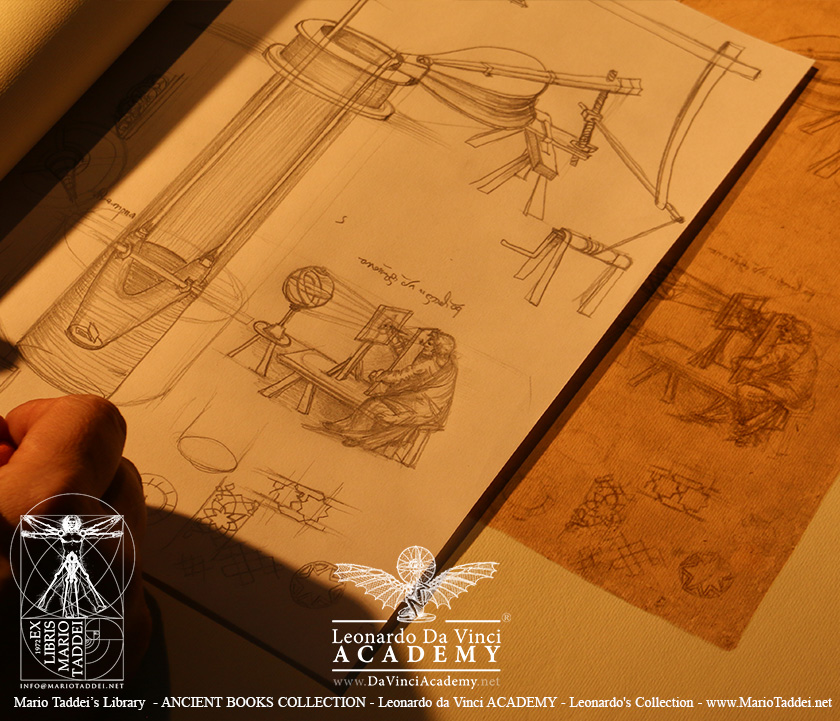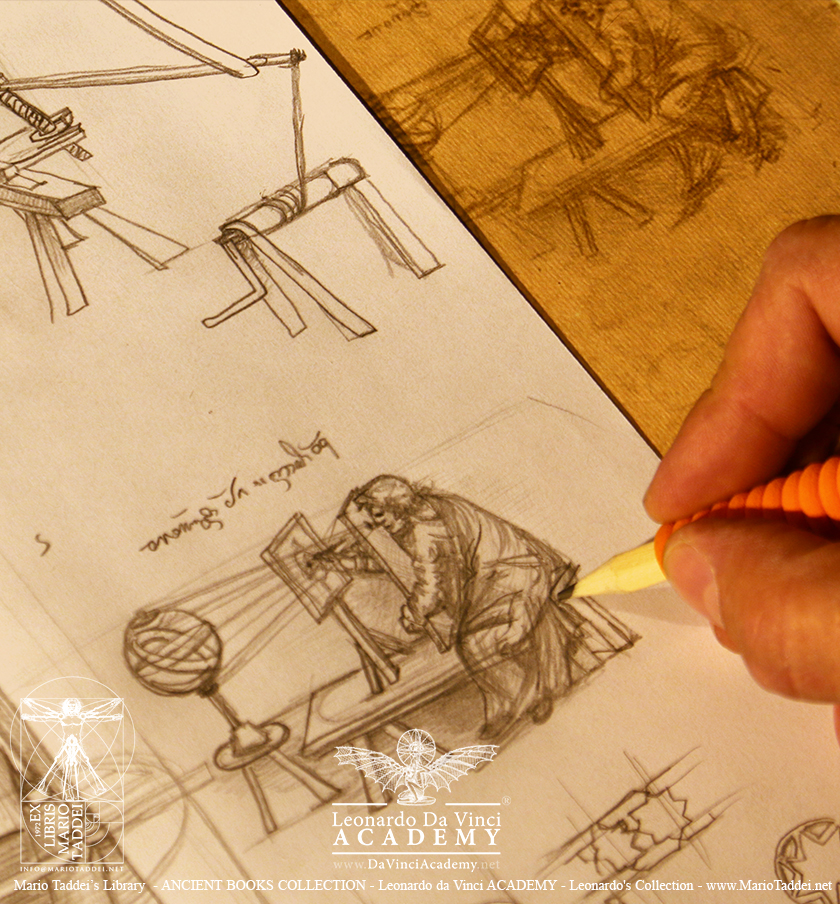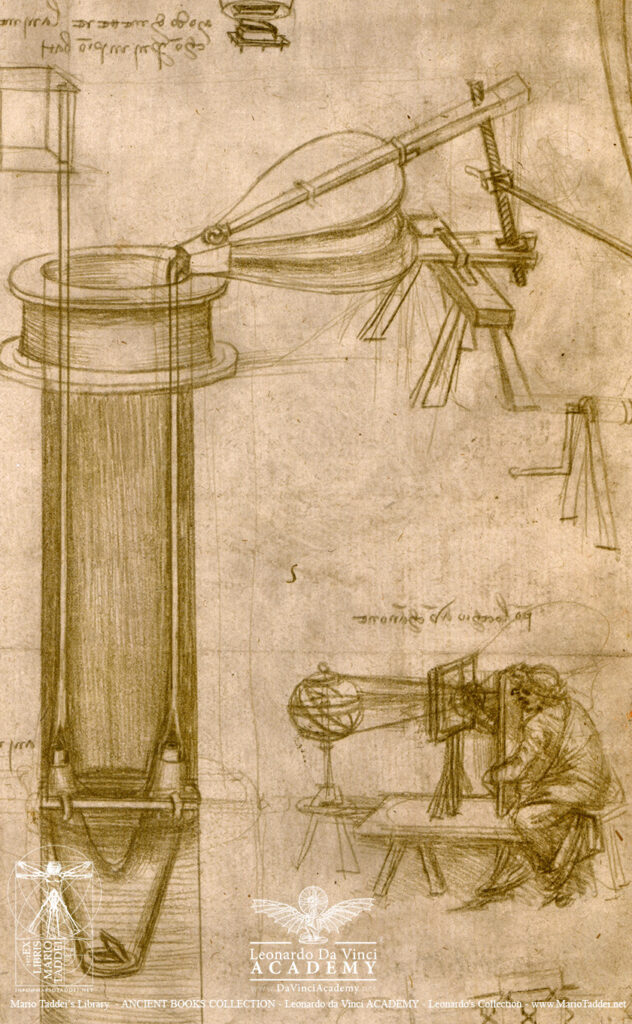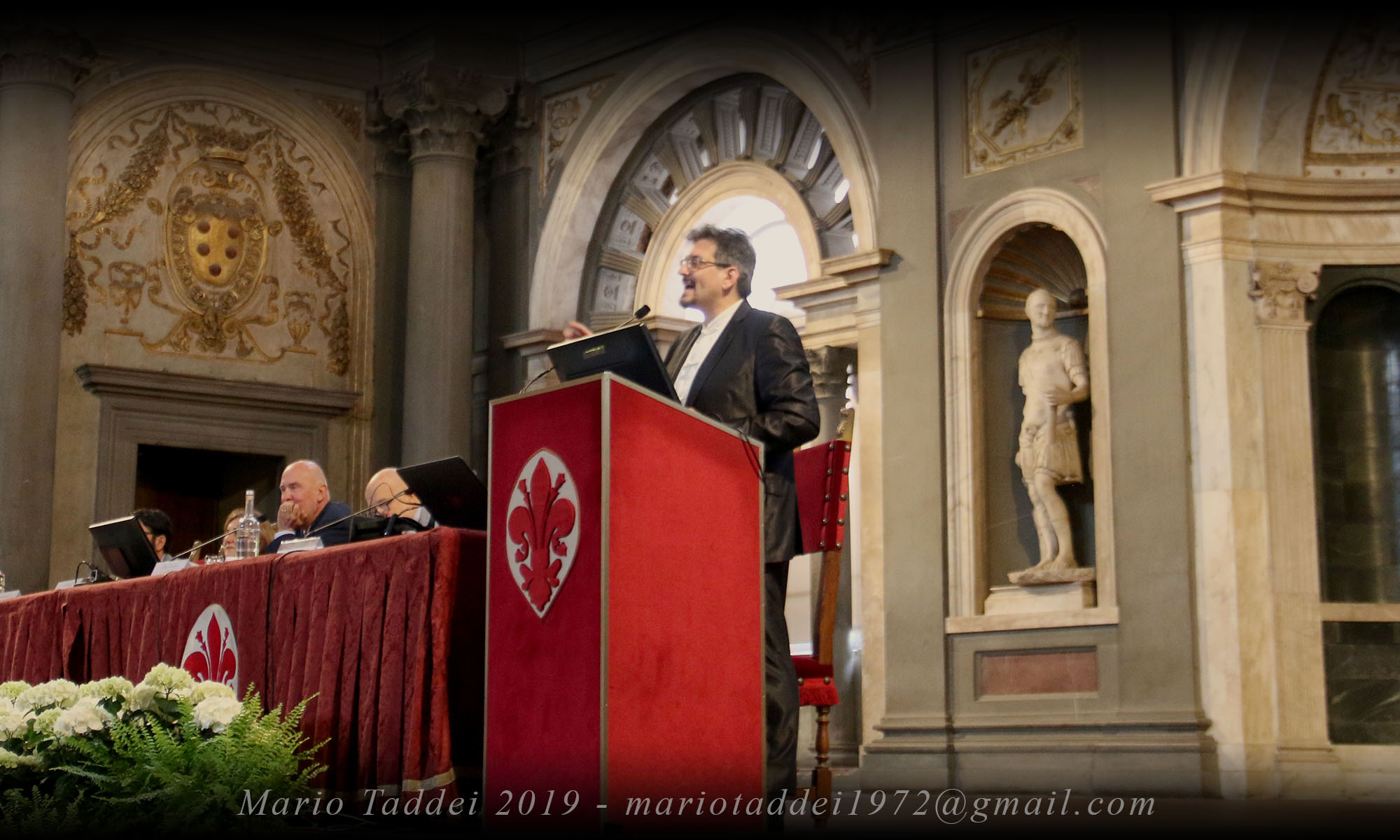
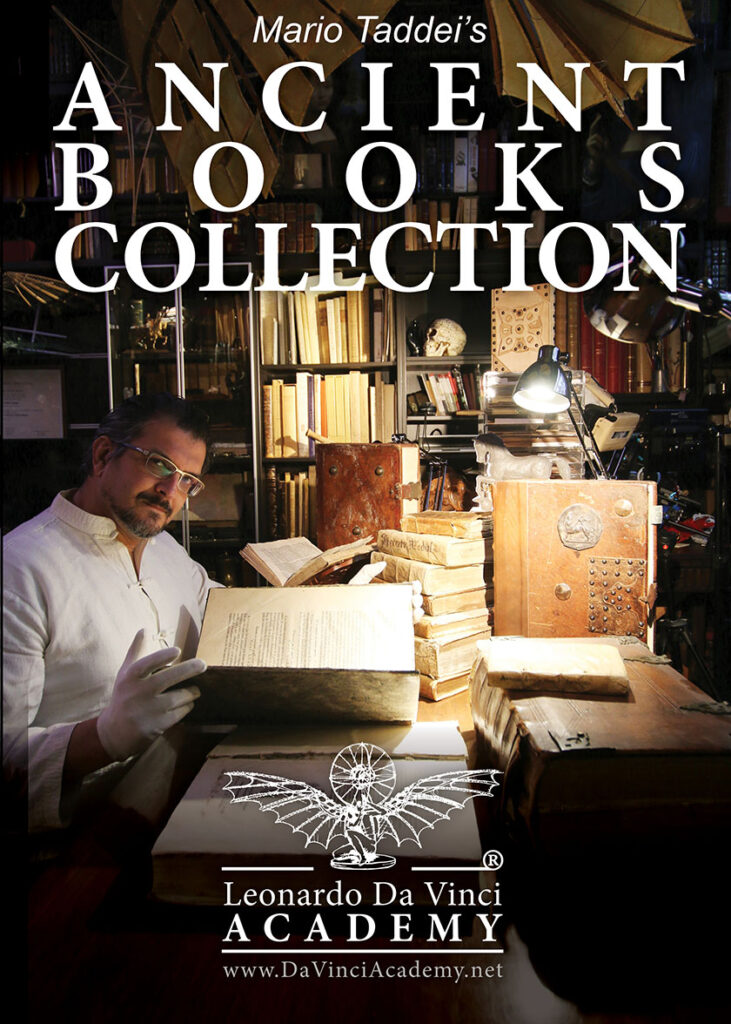
Alcuni Libri della collezione – Some Books in the Collection
1505 Incunabulum SEXTI LIBRI
1539 ARISTOTELIS
1550 SACROBOSCO Tractatus de Sphaera
1542 GALENUS OPERA OMNIA
1560 Aristotelis Metaphysicorum
1558 Testamenti novi – editio vulgata – Lug.
1589 – DI HERONE Alessandrino DE GLI AUTOMATI
1595 Decreta Provinciae Mediolanensis
1586 La Anatomia del Valverde
1607 Novo teatro di machine et edificii. Vittorio Zonca
1636 PSALTERIVM CHORALE
1651 TRAITÉ DE LA PEINTURE LÉONARD DE VINCI
1651 TRATTATO DELLA PITTURA DI LEONARDO DA VINCI editio princeps
1681 DE MOTU ANIMALIUM – BORELLI
1710 Il gran dizionario universale
1723 BIBLITHECA SACRA
1791 TITO LIVII OPERA
1800 Repertory of arts and manufactures XII
1860 IMITATION JESUS
1898 – De L’anatomie – Leonard de Vinci
1894 Codex Atlanticus Hoepli of 1894-1904
1903 Cyclopedia of Engineering – Chicago
1901 De L’anatomie, Roux & Viarengo
1893 Codex of Flight, T. Sabachnikoff
1929 Codes, Commissione VInciana
1926 Reale Commissione Vinciana Collezione Completa
Various original private reconstructions of the Codes of Leonardo
NFT & Copyright: 1999/2024 Mario Taddei
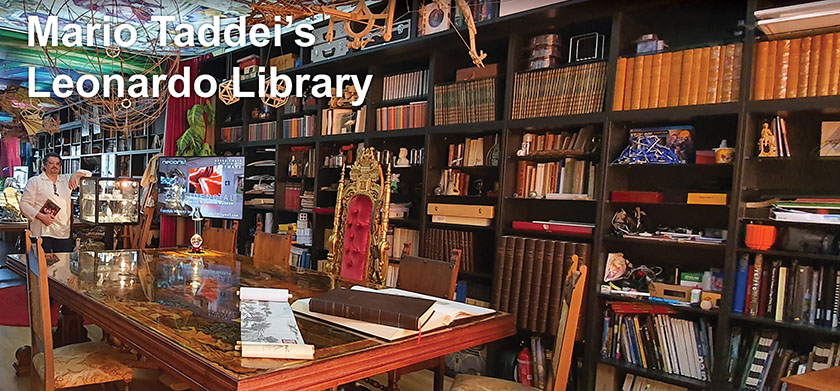
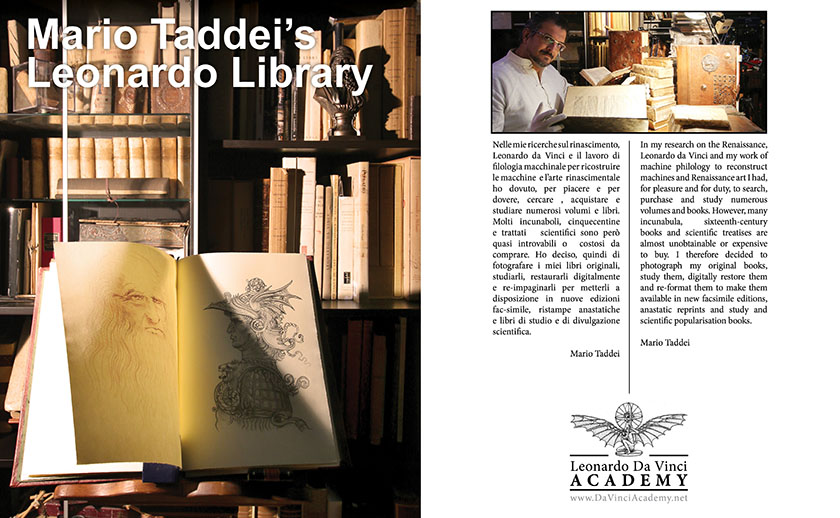

Mario Taddei’s ANCIENT BOOKS COLLECTION – Leonardo da Vinci ACADEMY – Leonardo’s Collection

1539 ARISTOTELIS
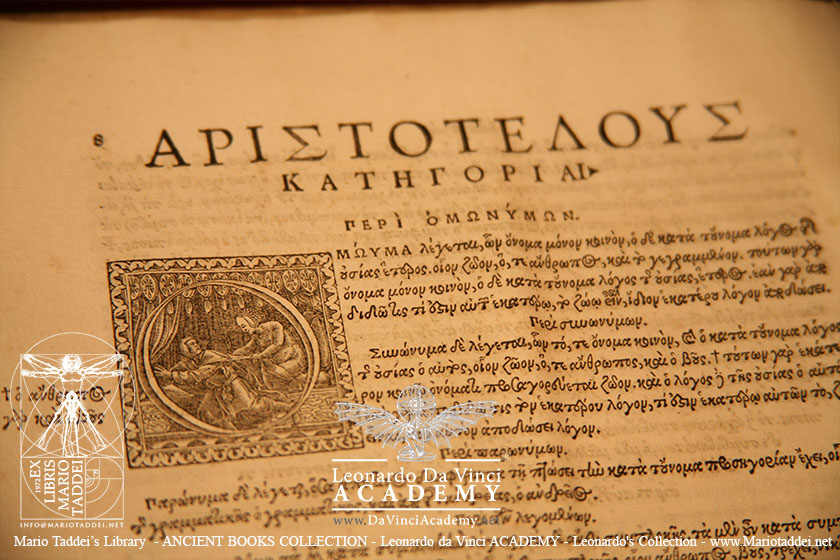

1550 SACROBOSCO Tractatus de Sphaera
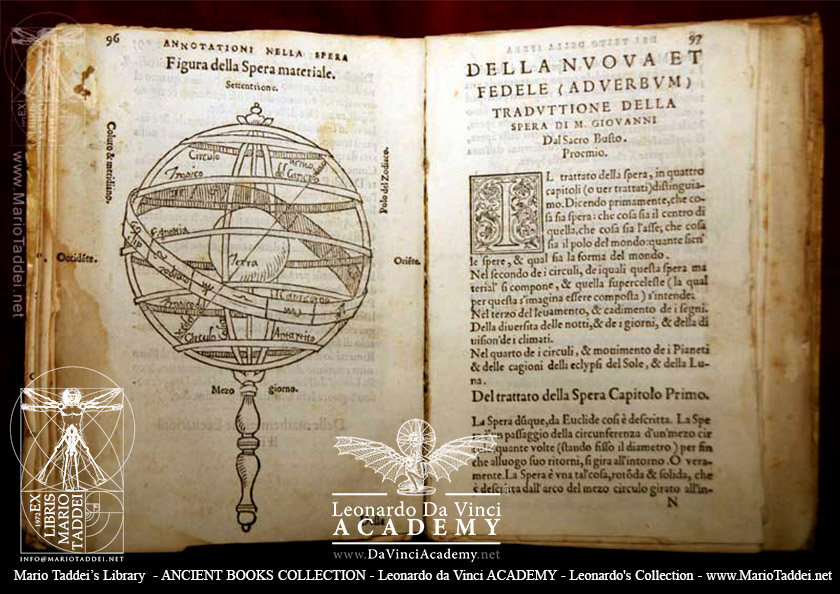
MAURO FIORENTINO – SACROBOSCO Annotazione sopra la Lettione della Spera (sic) del Sacrobosco Florence Lorenzo Torrentino 1550 FIRST EDITION First edition printed in Florence in 1550 by Lorenzo Torrentino which contains, besides the Italian translation of Sacrobosco’s text (first published in Venice in 1537), the new translation of Fra Mauro Fiorentino, a “Sphera theologica”, a “Sphera platonica” and other additions dealing with studies and astrology. The author dedicates the work to Cosimo de’ Medici, dated January 1, 1547 (p 4). This book reveals Mauro’s compliance with the Church’s opposition to Copernicus which induced him to suppress the remarks on the new discoveries which were in his 1537 Italian version. “The theme of the commentary is a compromise and is succinctly expressed in the maxim printed on p. 160 (trans.): “God is a sp whose center is everyw and whose circumference is now” (Kraus 204/126). «This book represents the first step of the Roman Church in the beginning struggle against Copernicus’ revolutionary theory» (E. Weil 19/207). Houzeau & L. 1668. Moreni, Torrentino, 85-87. Riccardi II, 138: «Bella edizione». Johannes de Sacrobosco or Sacro Bosco (John of Holywood, c. 1195 – c. 1236) was an English scholar and astronomer who taught at the University of Paris and wrote the authoritative mediaeval astronomy text Tractatus de Sphaera . He was educated at Oxford University. According to a seventeenth century account, he arrived at the University of Paris on June 5, 1221, but whether as an arts student or as a licentiate (one having a Master of Arts degree from another university and thus qualified to teach) is unclear. In due course, he began to teach the mathematical disciplines at the University of Paris. About 1230, his most well known work, Tractatus de Sphaera , was published. In this book, Sacrobosco discussed the Earth and its place in the Universe. It was required reading by students in all Western European universities for the next four centuries. Its description of the Earth as a sp and its popularity exposes the nineteenth-century opinion that medieval scholars thought the Earth was flat as a fabrication. In his Algorismus, theorized to have been his first work, Sacrobosco showed himself to be a strong proponent of Arab methods of mathematics, his Algorismus being the first text to introduce Hindu-Arabic numerals and procedures into the university curriculum.
First edition – Illustrated with many woodcuts Condition
Attractive original full limp vellum binding with handwritten title on the spine. Pages: 219 Complete Size: 7.00 in. x 5.50 in. ; 17,6 cm x 13,4 cm
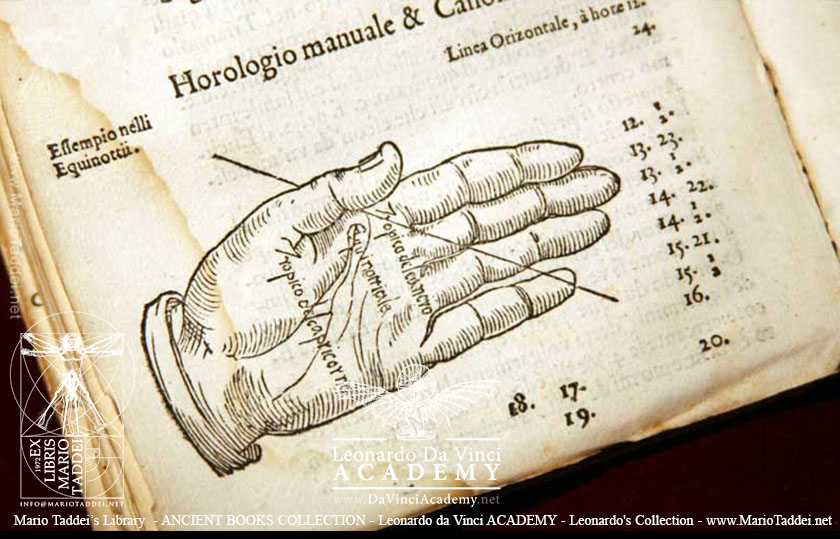
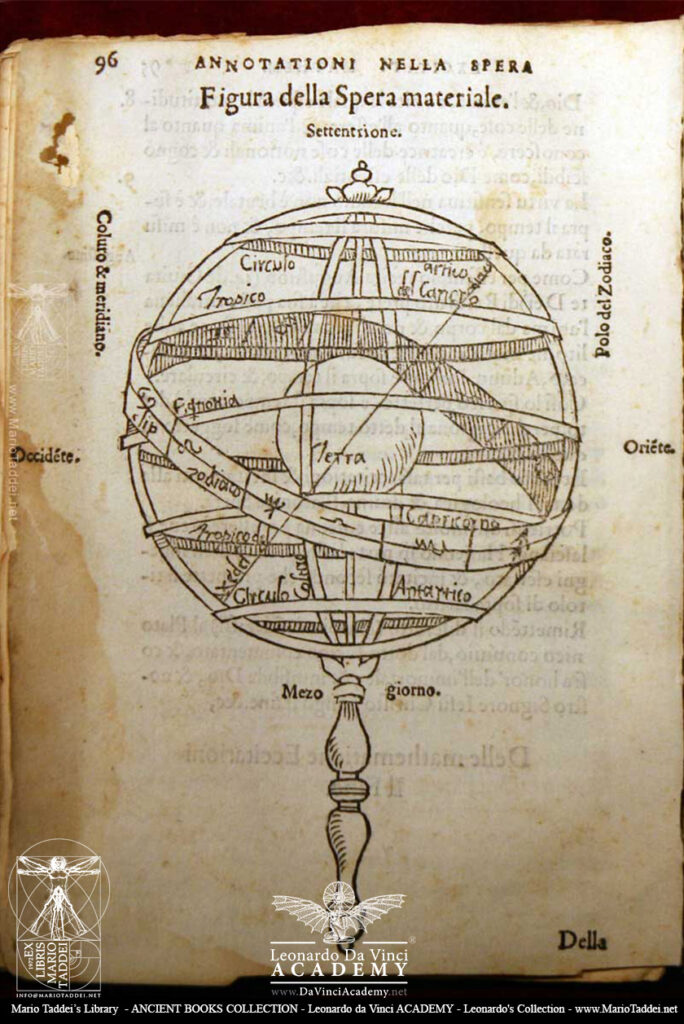
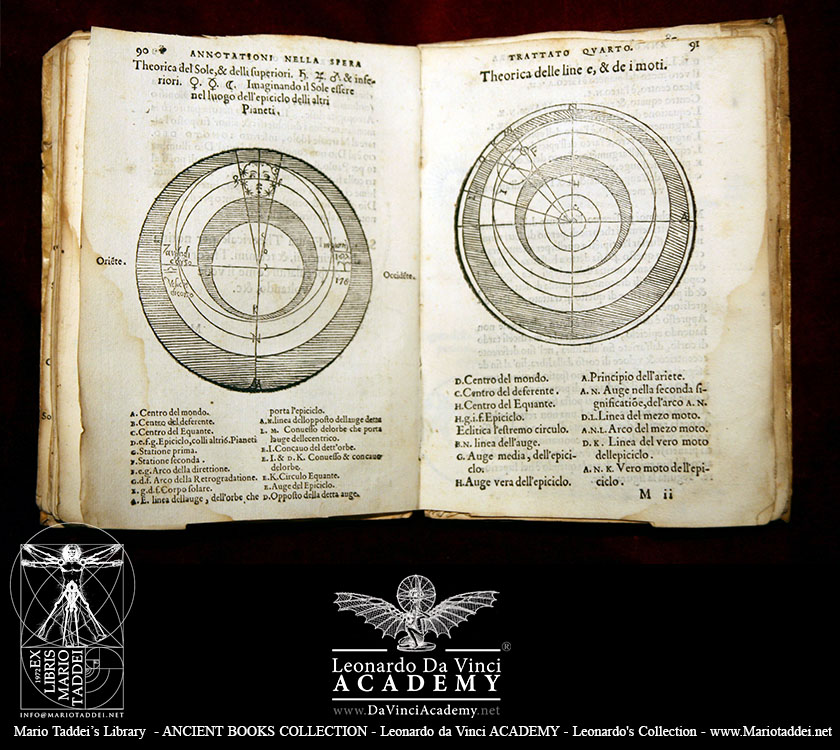

1542 GALENUS OPERA OMNIA
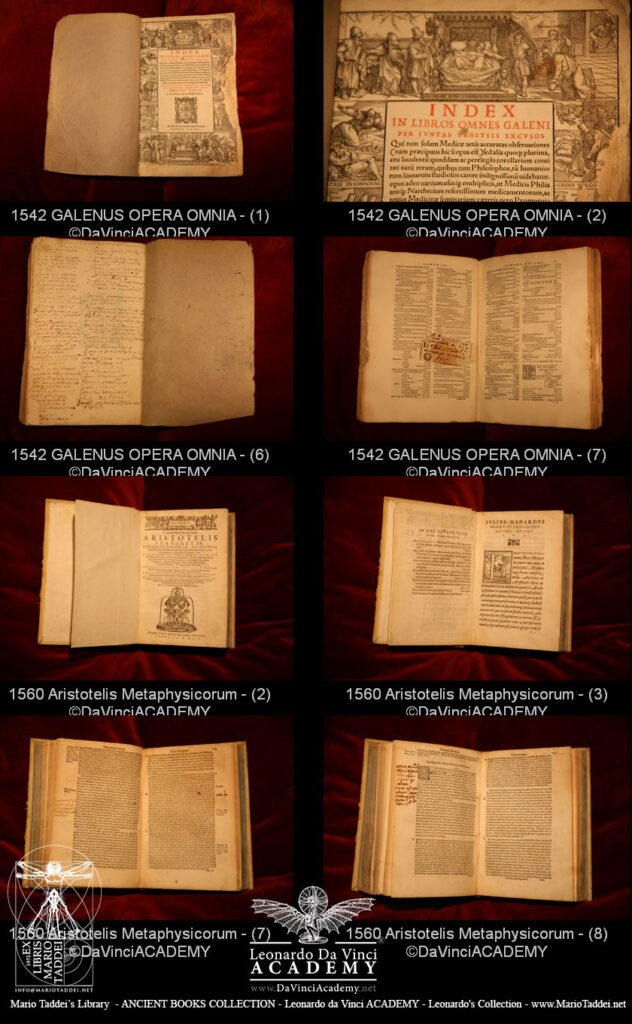
Il Galeni opera omnia ebbe fin dalla prima pubblicazione del 1541 uno straordinario successo perché per la prima volta veniva data alla stampa l’opera completa del leggendario medico Claudio Galeno.
Alla redazione dei 12 volumi in folio di cui l’edizione è composta, furono coinvolti i migliori specialisti del settore, e i figli di Lucantonio Giunta ottennero da papa Paolo III e dal Senato Veneto un privilegio di stampa di quindici anni. La pubblicazione includeva, inoltre, scritti di Galeno fino ad allora inediti, tradotti dal medico Giovan Battista Montano, che fu coordinatore di tutta l’opera.
Gli eredi del Giunta ristamparono l’opera ben otto volte: fra il 1550 e il 1625. Per decorare i frontespizi delle nove edizioni dell’opera, furono utilizzate due diverse cornici illustrate, identiche nell’iconografia ma diverse nello stile.
Se l’incisore responsabile della prima versione, presente nelle prime tre edizioni, dimostra di essere debitore nei confronti di Domenico Campagnola e Lambert Sustris, quello che eseguì la seconda versione, apparsa nel 1565 e mantenuta poi per tutte le successive edizioni, è un artista meno abile nella resa naturalistica delle figure, ma maggiormente influenzato dall’ondata manieristica sviluppata a Venezia da personalità artistiche come Paolo Veronese, Andrea Schiavone e Tintoretto. I personaggi raffigurati in questo frontespizio subiscono infatti, rispetto alla prima versione, un allungamento sinuoso dei corpi, resi con un tratto personale nervoso e vibrante, mentre, contemporaneamente, una decorazione più minuta arricchisce gli oggetti e le vesti delle figure.
Il frontespizio giuntino qui esposto appartiene alla quarta edizione dell’opera, pubblicata nel 1565. Inoltre, l’indice che l’accompagna è nuovo e molto più dotto e articolato rispetto a quello delle precedenti edizioni; fu compilato dal celebre medico ferrarese Antonio Musa Brasavola.
All’interno dei sette volumi sono presenti altre illustrazioni: decorazioni a scopo ornamentale inserite nella parte superiore di alcune carte e una serie di vignette, concentrate nel sesto tomo, raffiguranti esempi di cure e marchingegni per sanare, tutte probabilmente rapportabili allo stile dell’artista che ha intagliato il frontespizio. Una sola di queste immagini è accompagnata da una sigla, “a b”, per ora rintracciata solo in un medaglione ovale riccamente decorato che racchiude il ritratto di Dante, inciso sul frontespizio del Dante con l’espositione di Christoforo Landino et di Alessandro Velutello sopra la sua commedia…, edito a Venezia nel 1564 da Nicolino da Sabbio e Domenico Sessa.

1560 Aristotelis Metaphysicorum
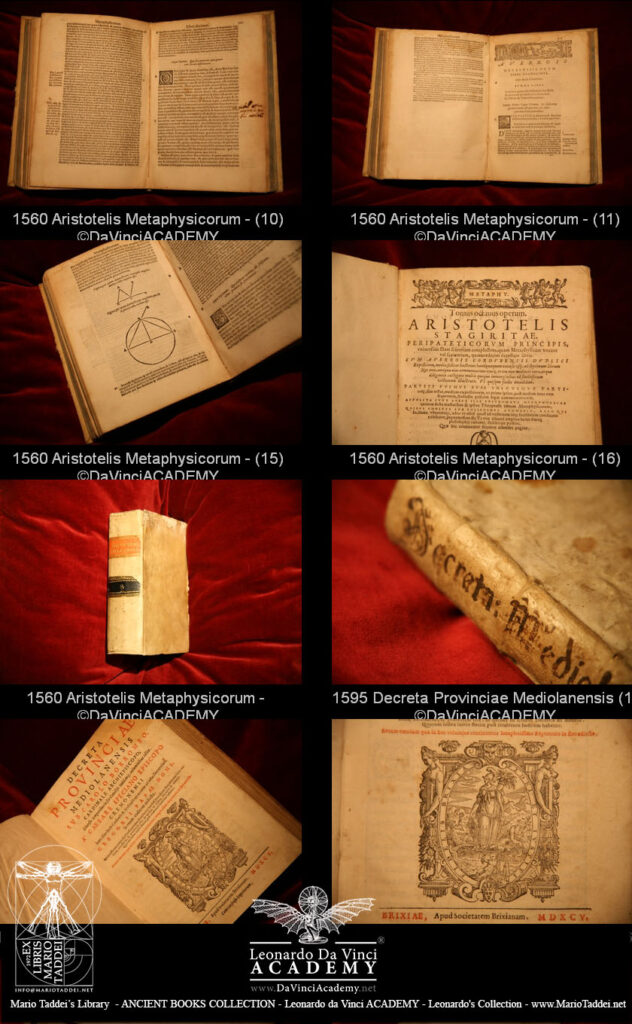
Aristotelis Stagiritae Metaphysicorum libri 14. Theophrasti metaphysicorum liber. Quorum omnium recognitionem, & additamentum versa pagina ostendit

1586 La Anatomia del Valverde
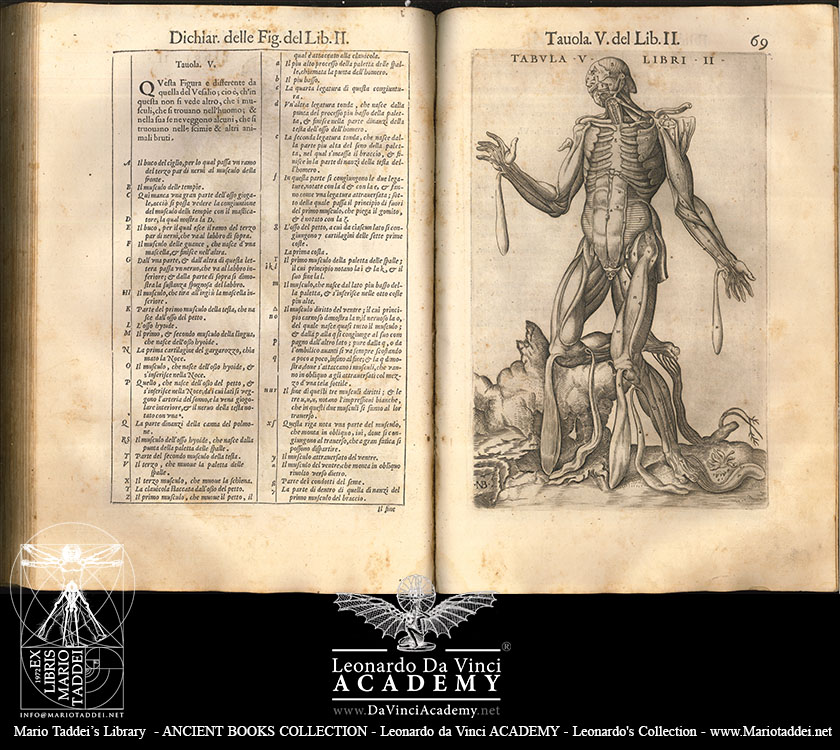
La Anatomia Del Corpo Umano, un libro scritto da Juan De Valverde nel 1586. Questo testo è stato uno dei primi a descrivere l’anatomia del corpo umano in dettaglio. Il libro contiene illustrazioni dettagliate del corpo umano, compresi organi interni e scheletro, e fornisce una panoramica completa della struttura e delle funzioni del corpo umano. La Anatomia Del Corpo Umano è stato un testo importante per la medicina e l’anatomia per molti anni, ed è ancora considerato un classico della letteratura medica.
This Book Is In Latin. This Book Is In Italian.This scarce antiquarian book is a facsimile reprint of the old original and may contain some imperfections such as library marks and notations. Because we believe this work is culturally important, we have made it available as part of our commitment for protecting, preserving, and promoting the world’s literature in affordable, high quality, modern editions, that are true to their original work.

1636 PSALTERIVM CHORALE – PSALTERIUM CHORALE
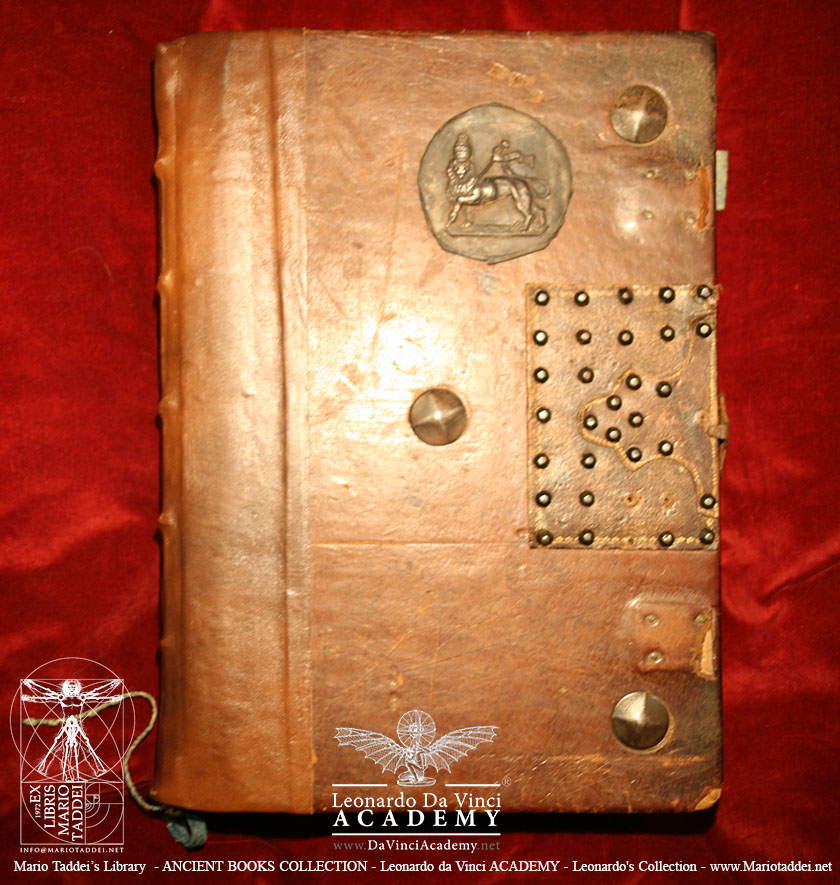
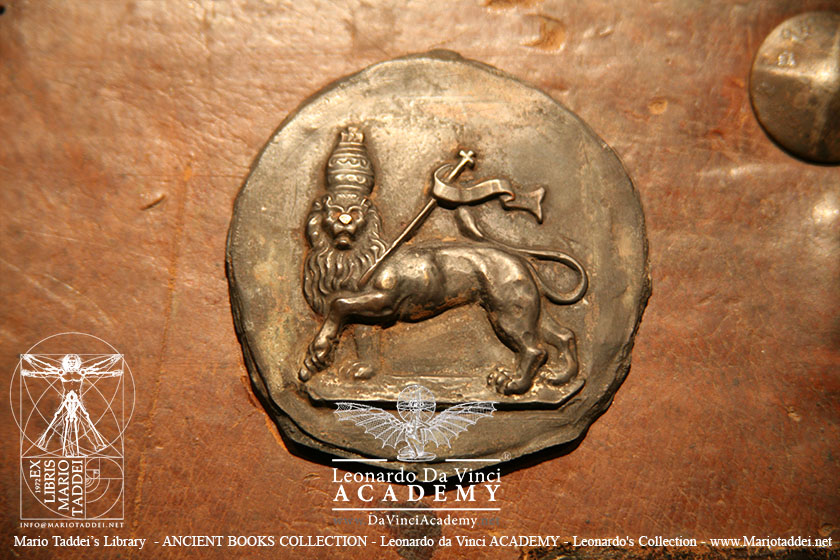
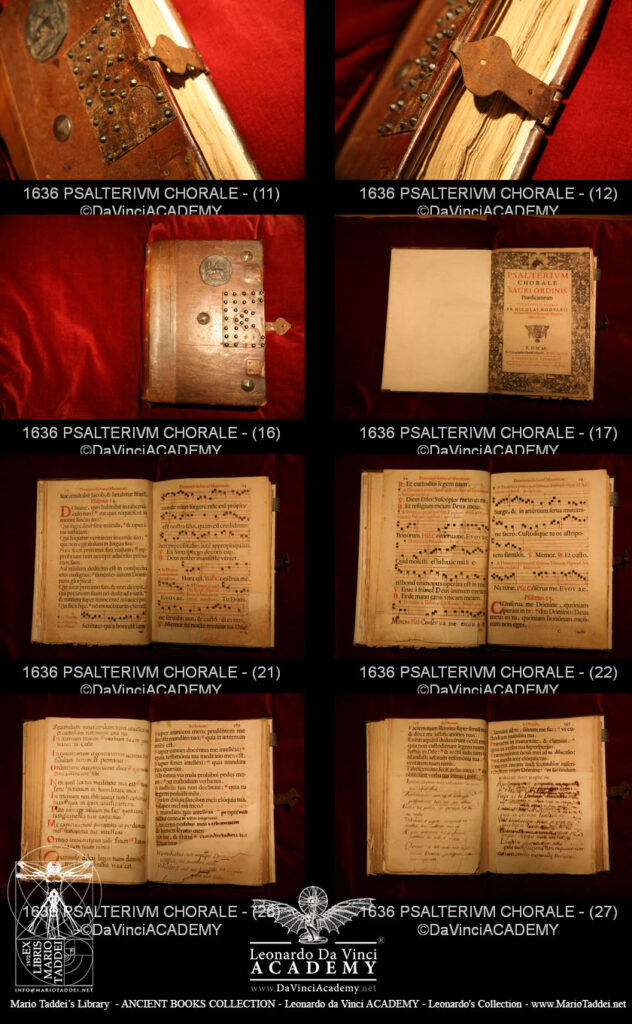


1651 TRATTATO DELLA PITTURA DI LEONARDO DA VINCI editio princeps
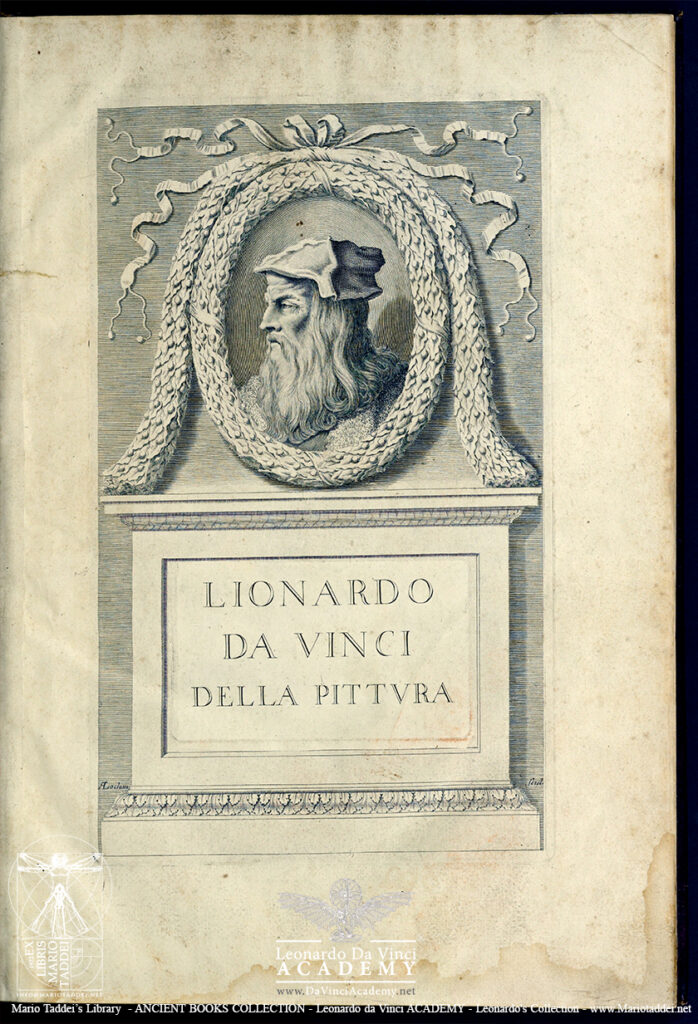
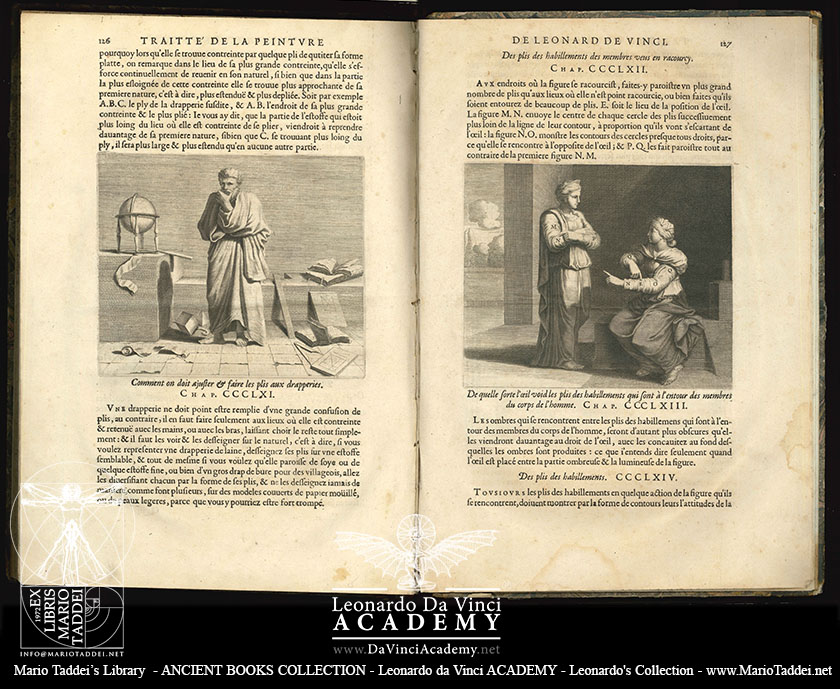
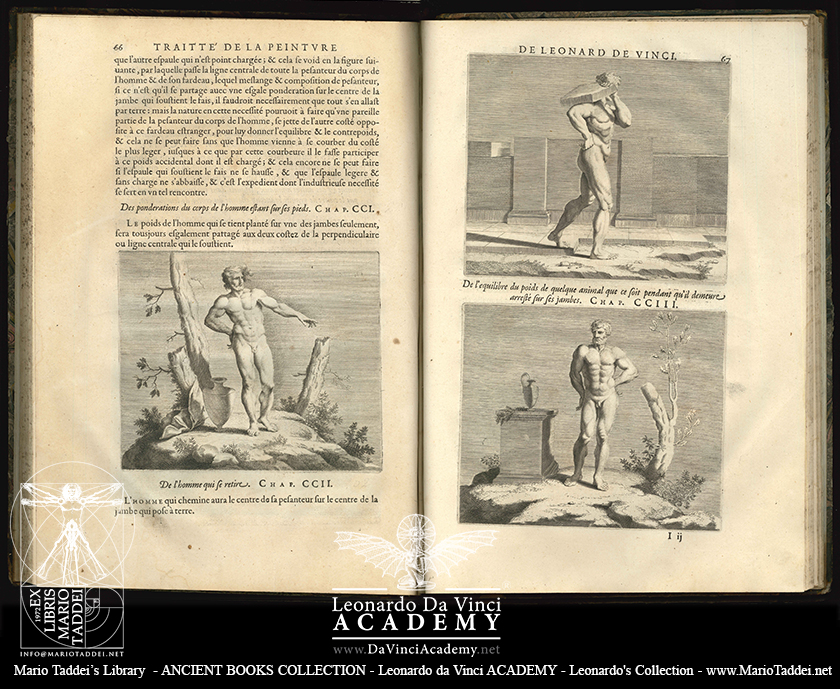
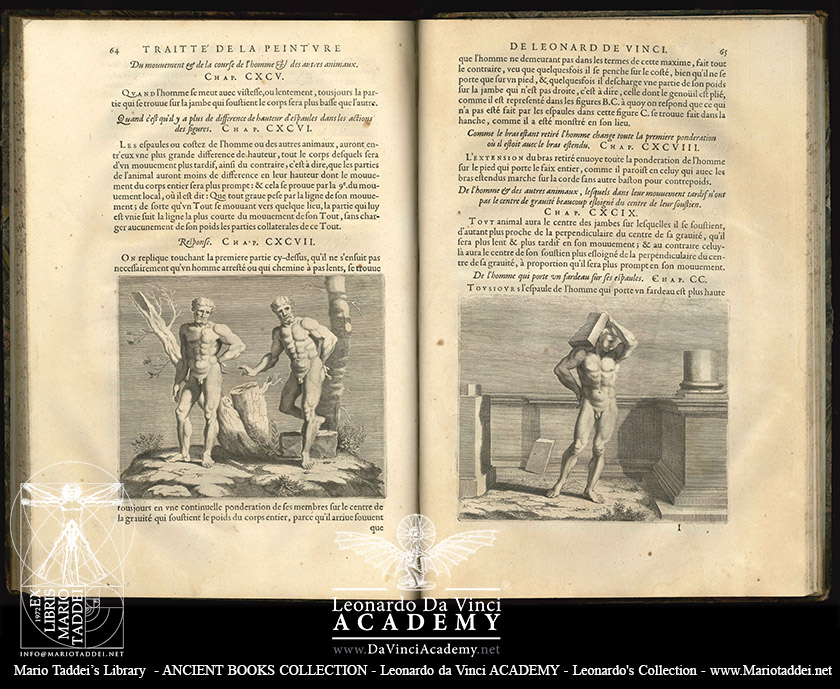

1901 De L’anatomie, Roux & Viarengo
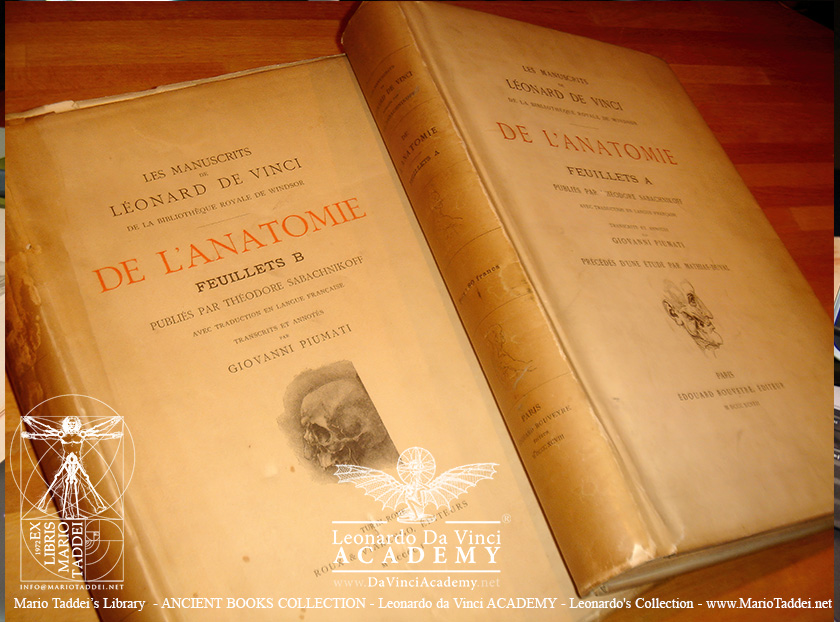

Replica realizzata a mano del codice Atlantico e ricostruzione dei manoscritti
Handmade replica of the Atlantic codex and manuscript reconstruction
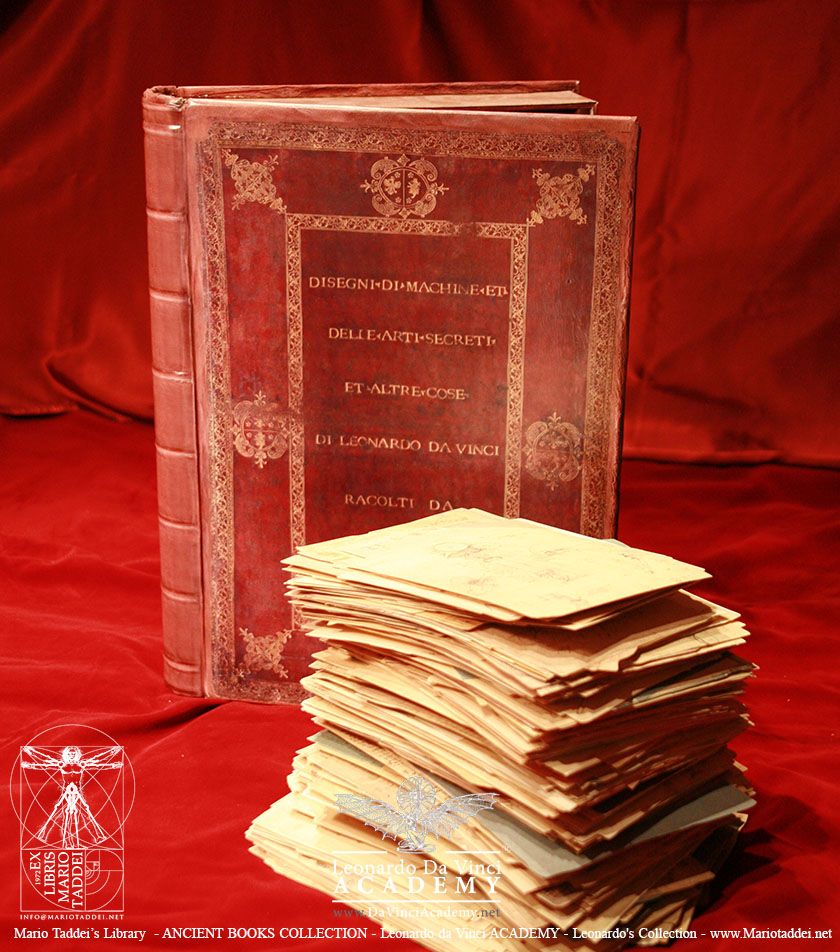
Mario Taddei’s ANCIENT BOOKS COLLECTION – Leonardo da Vinci ACADEMY – Leonardo’s Collection
